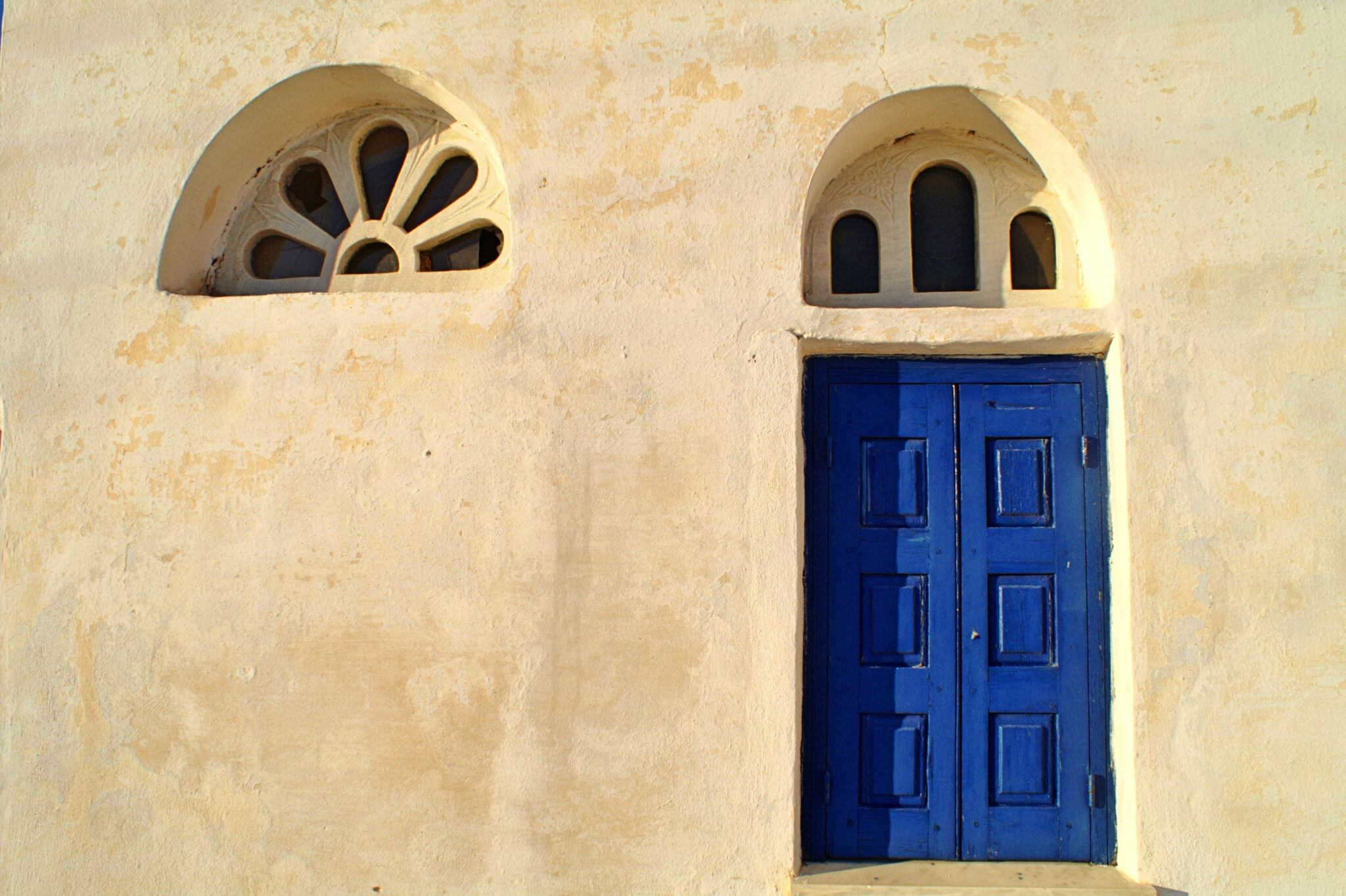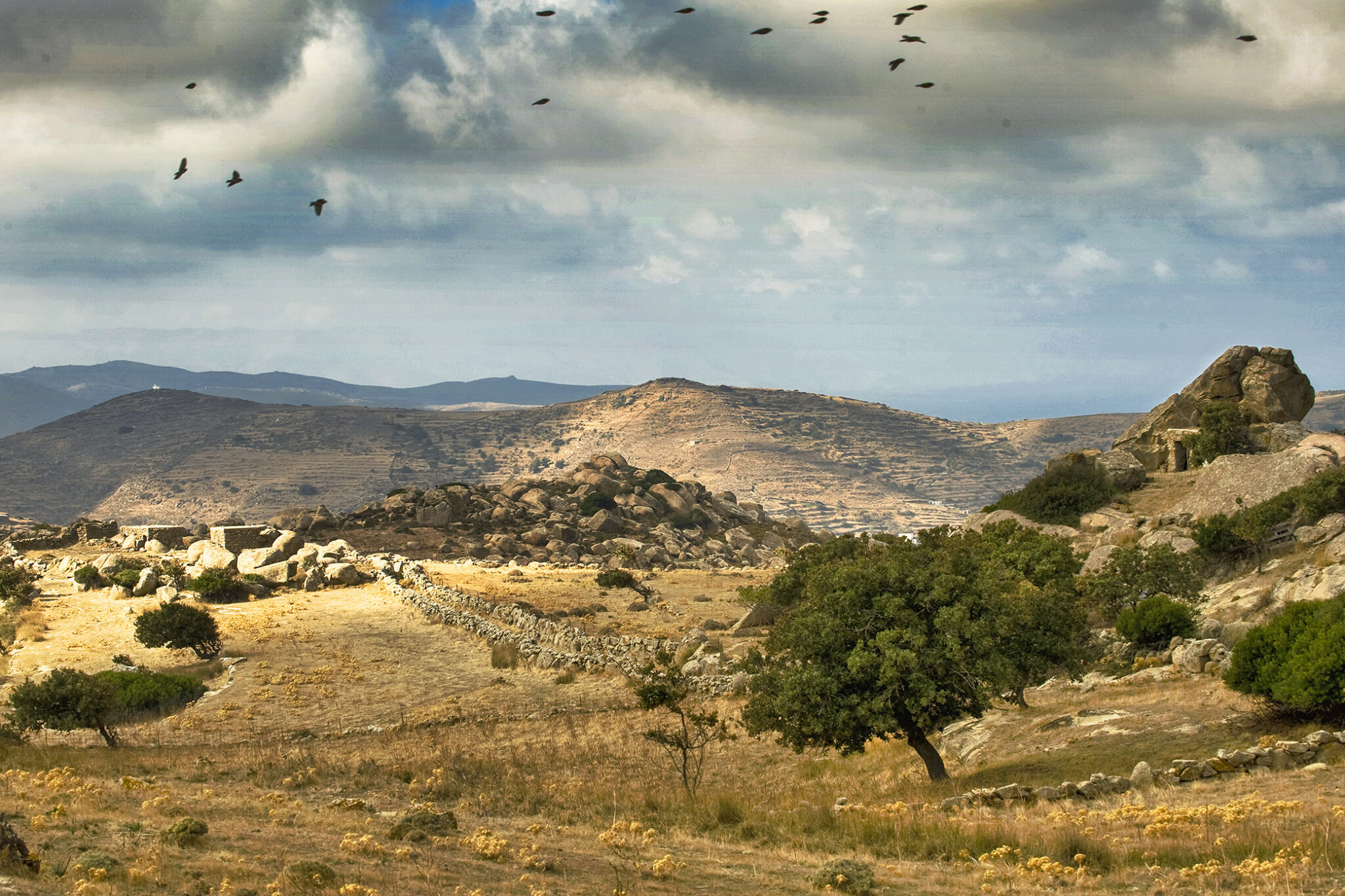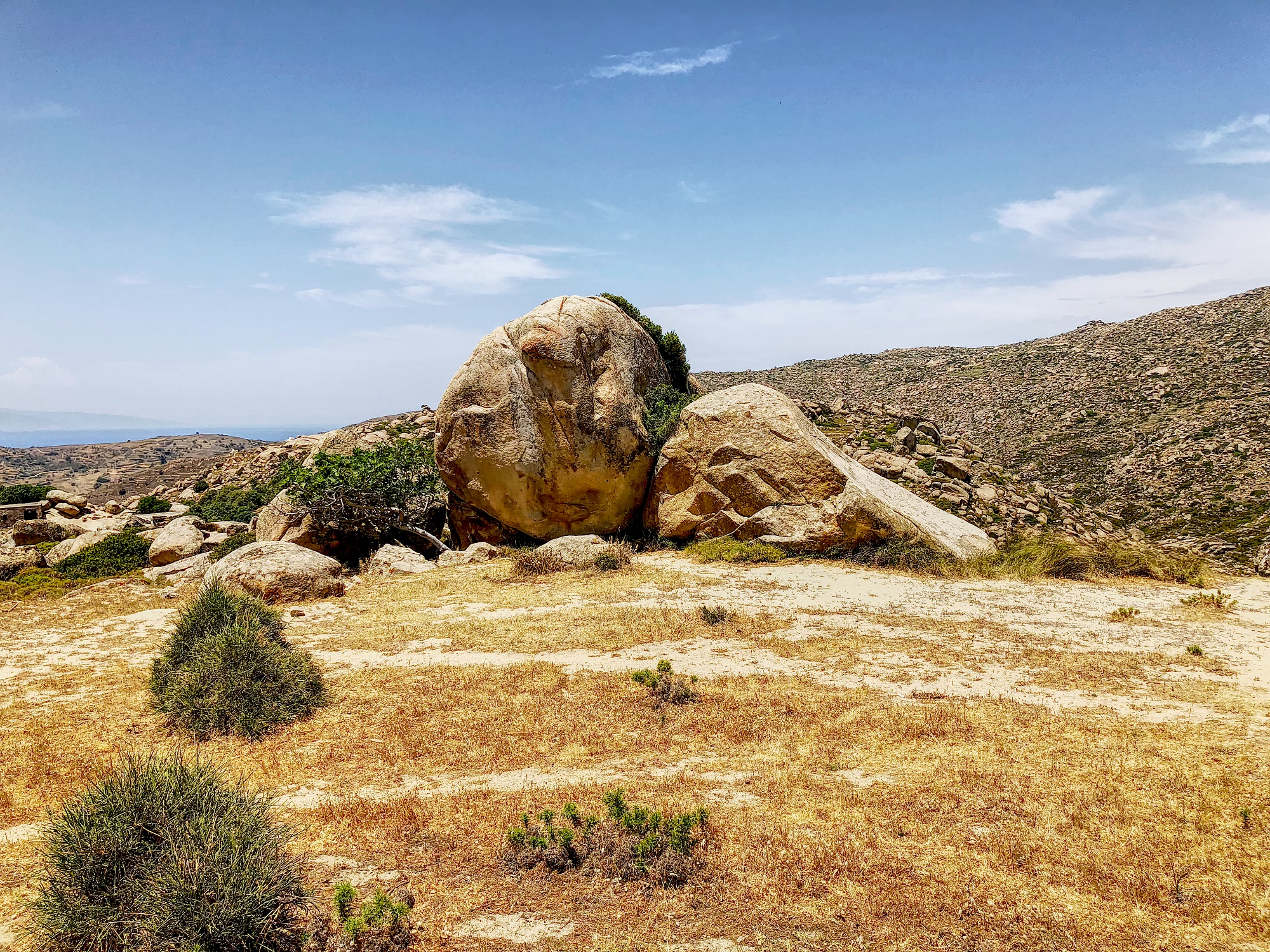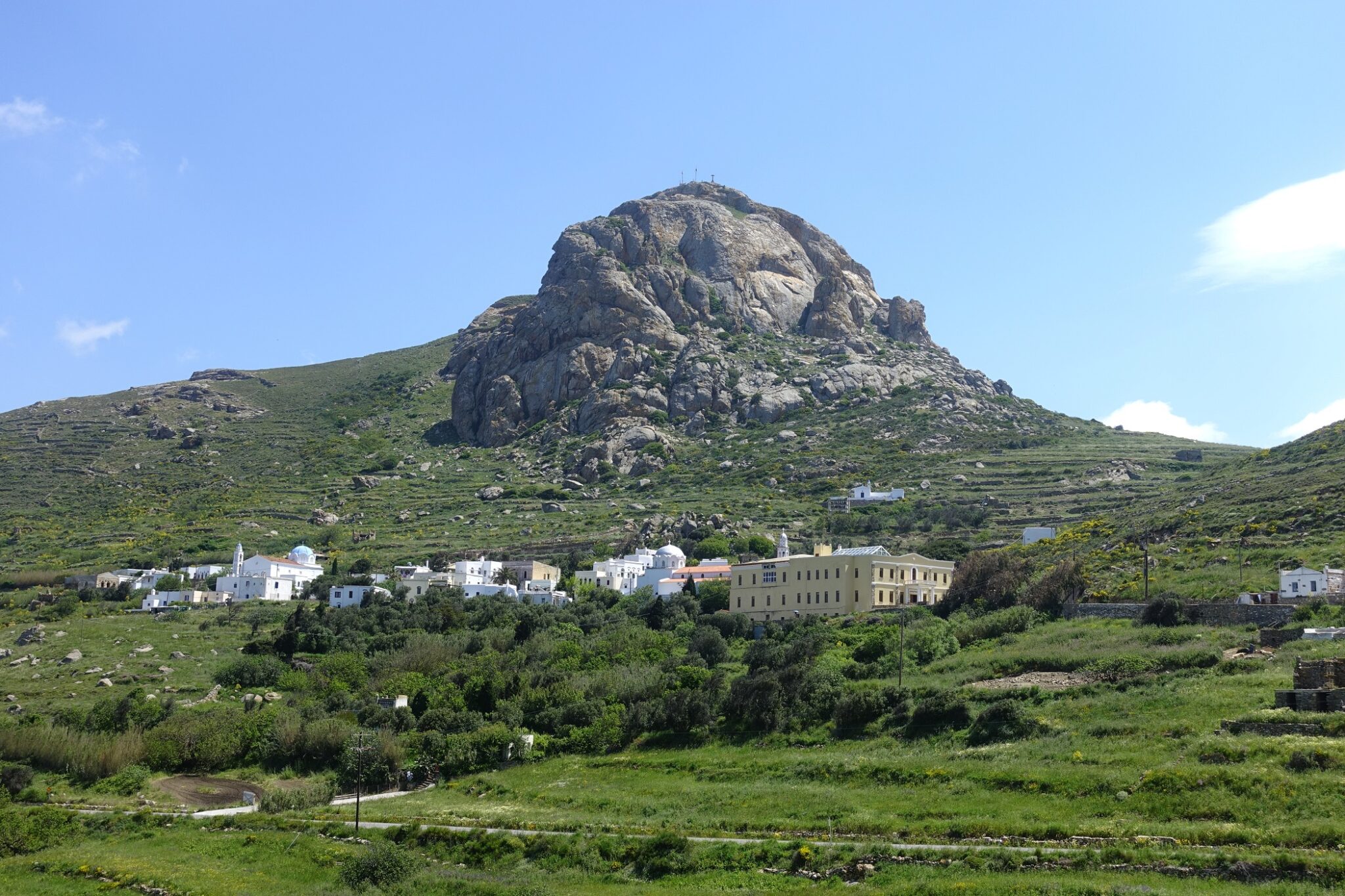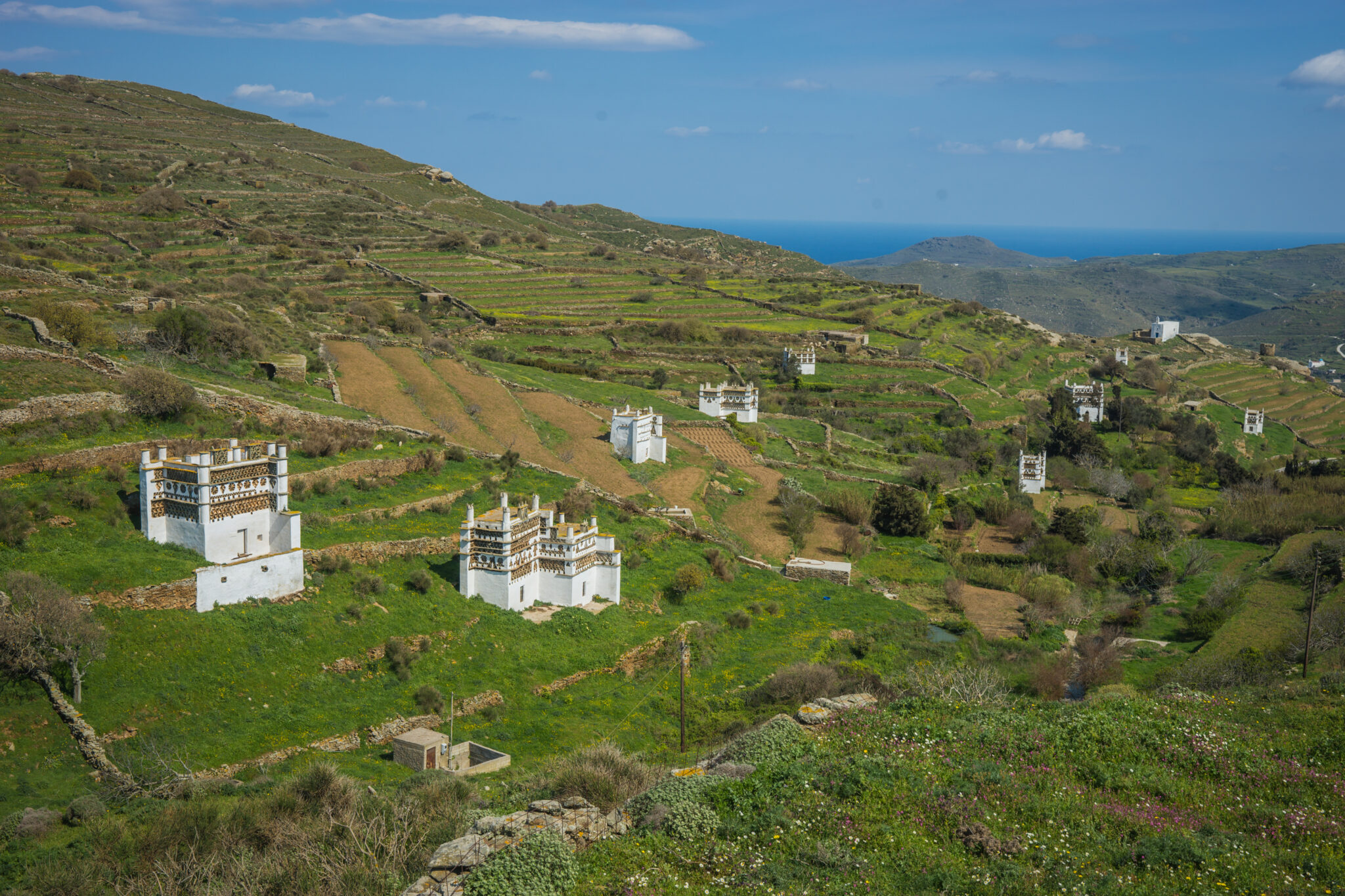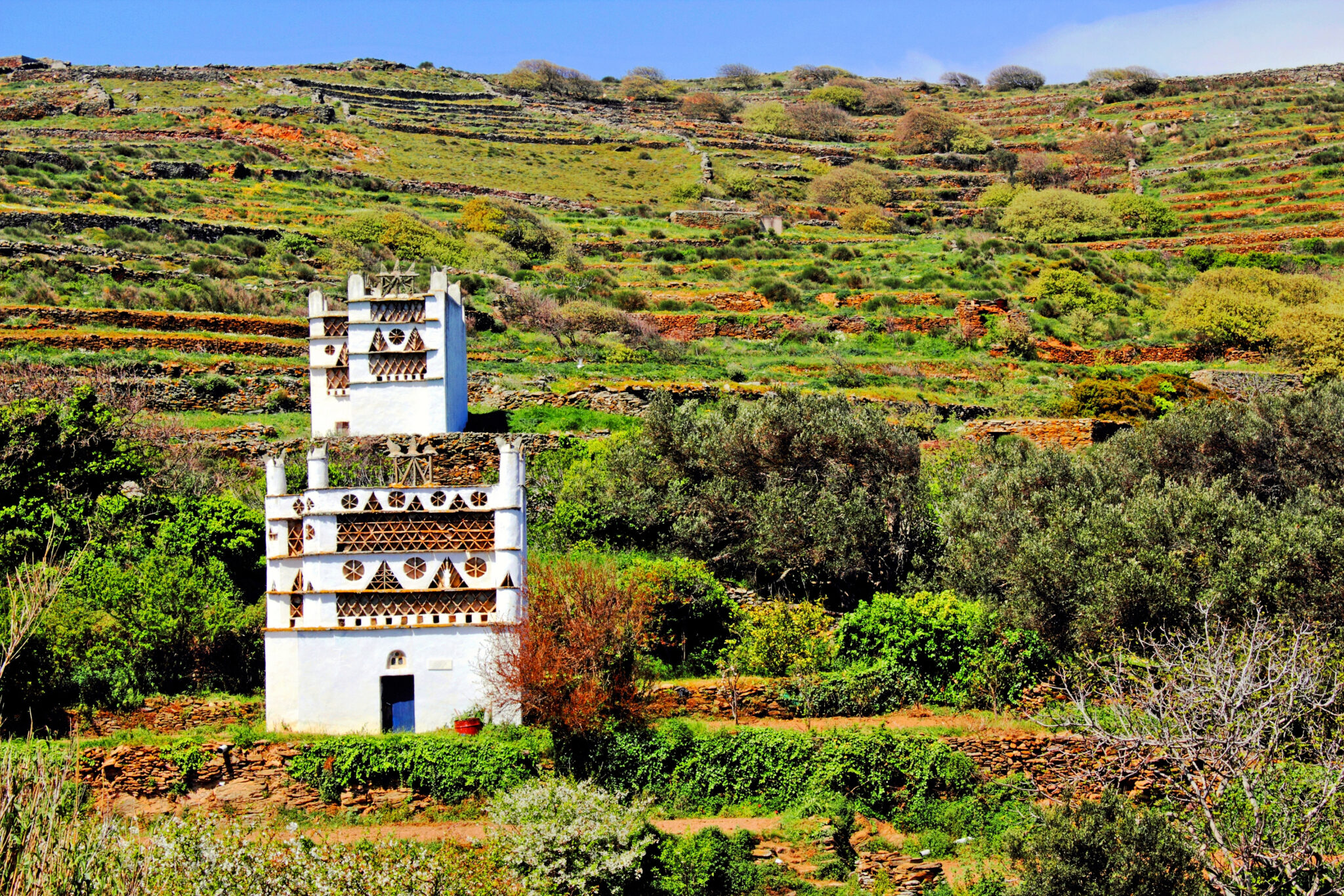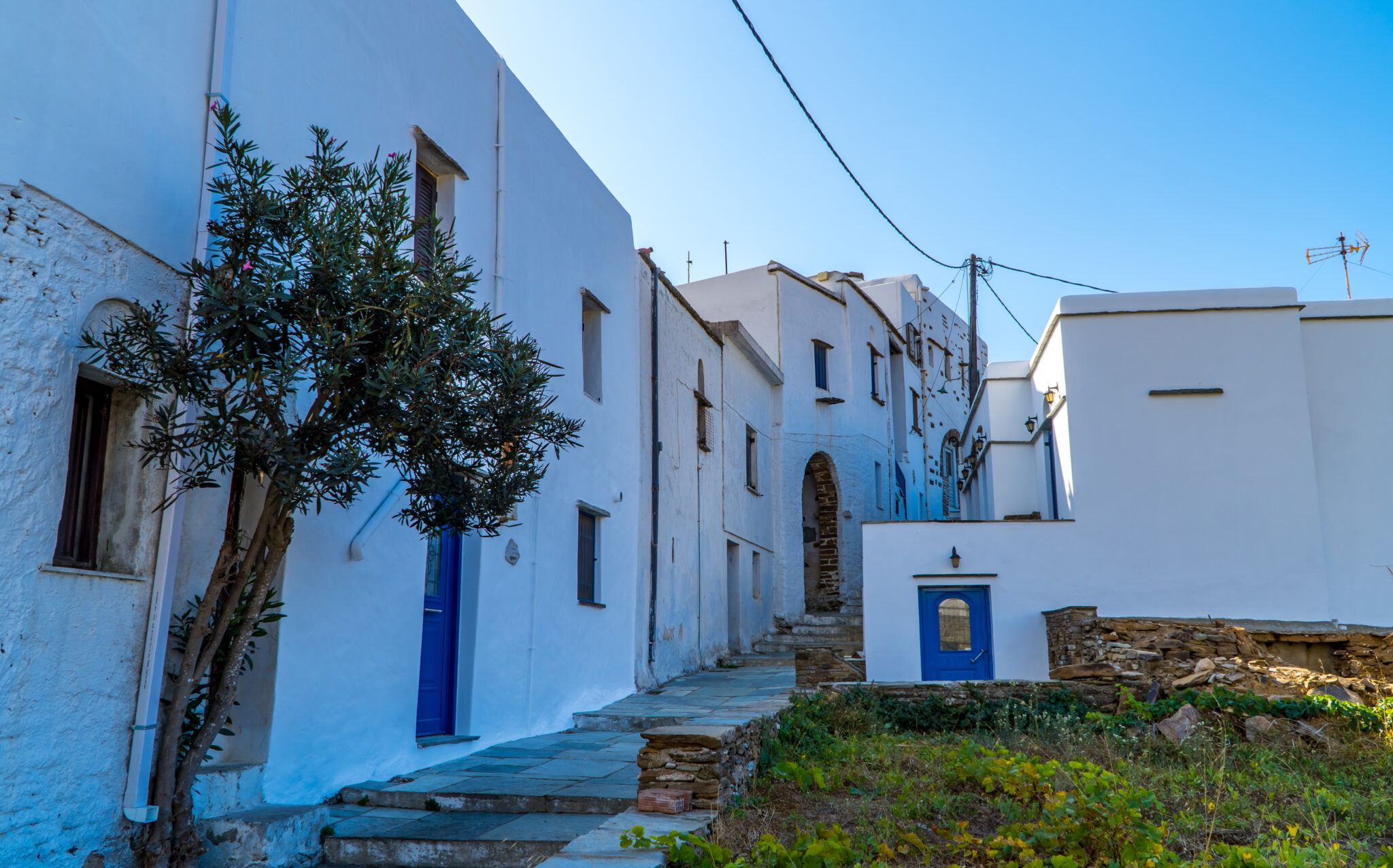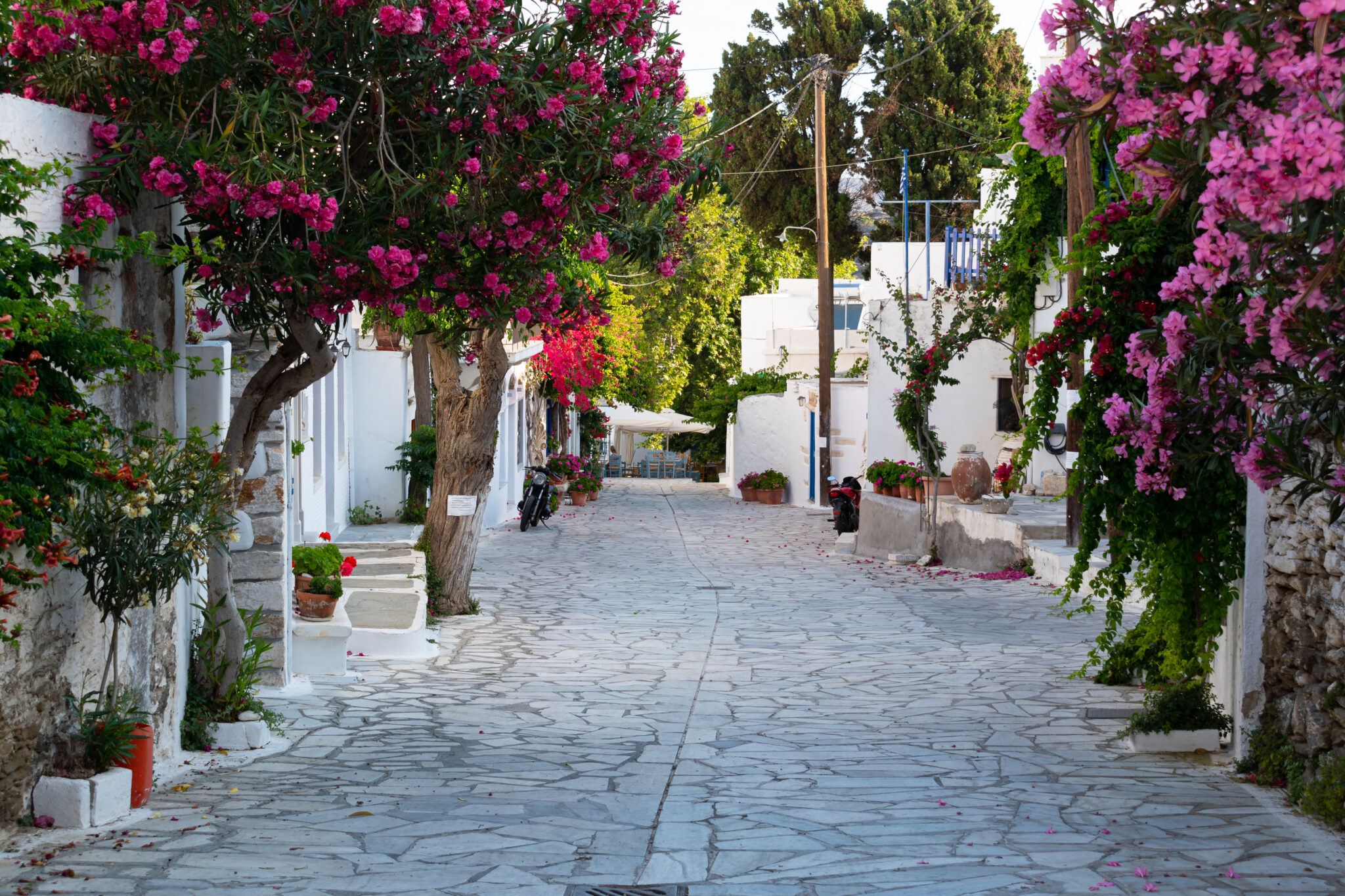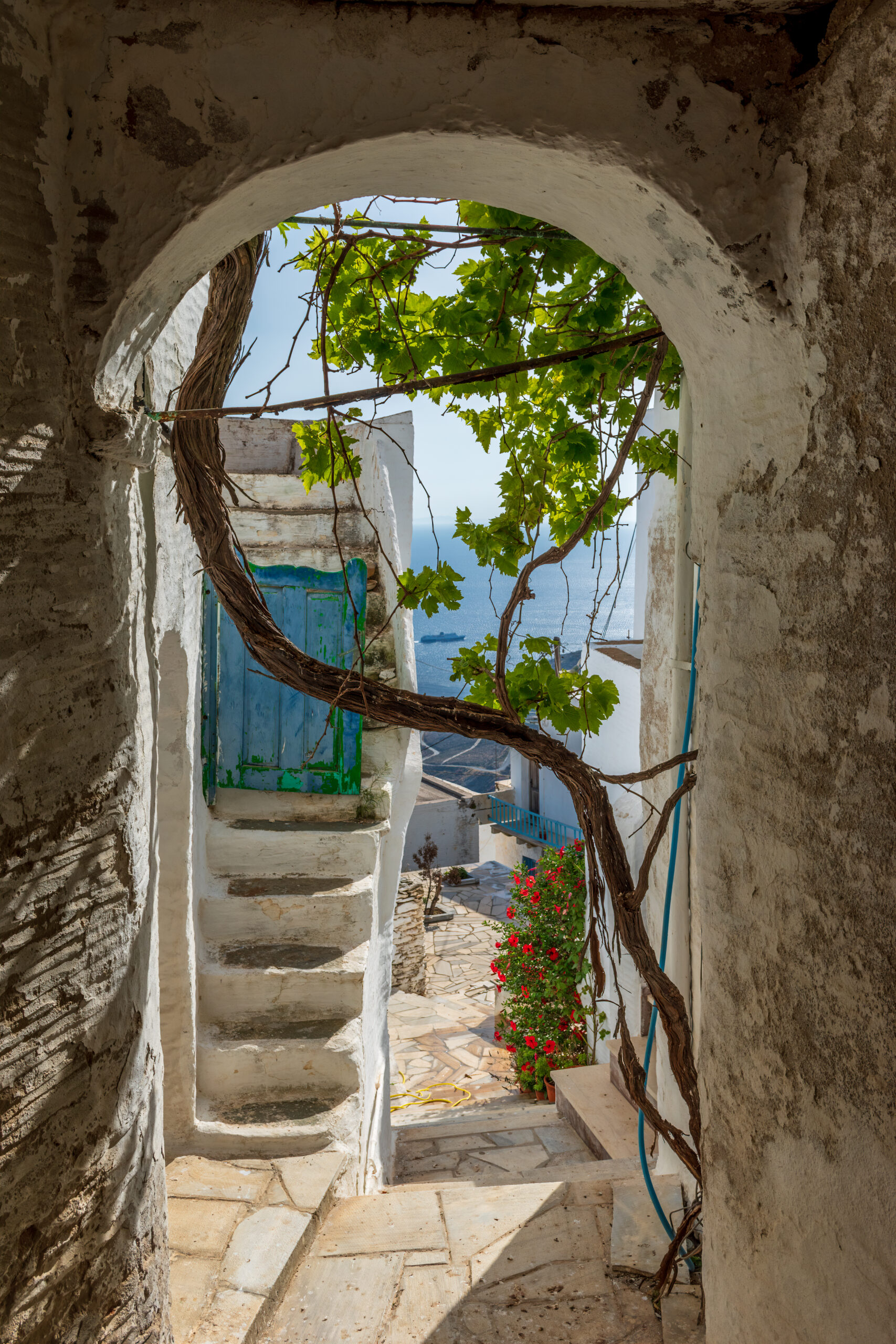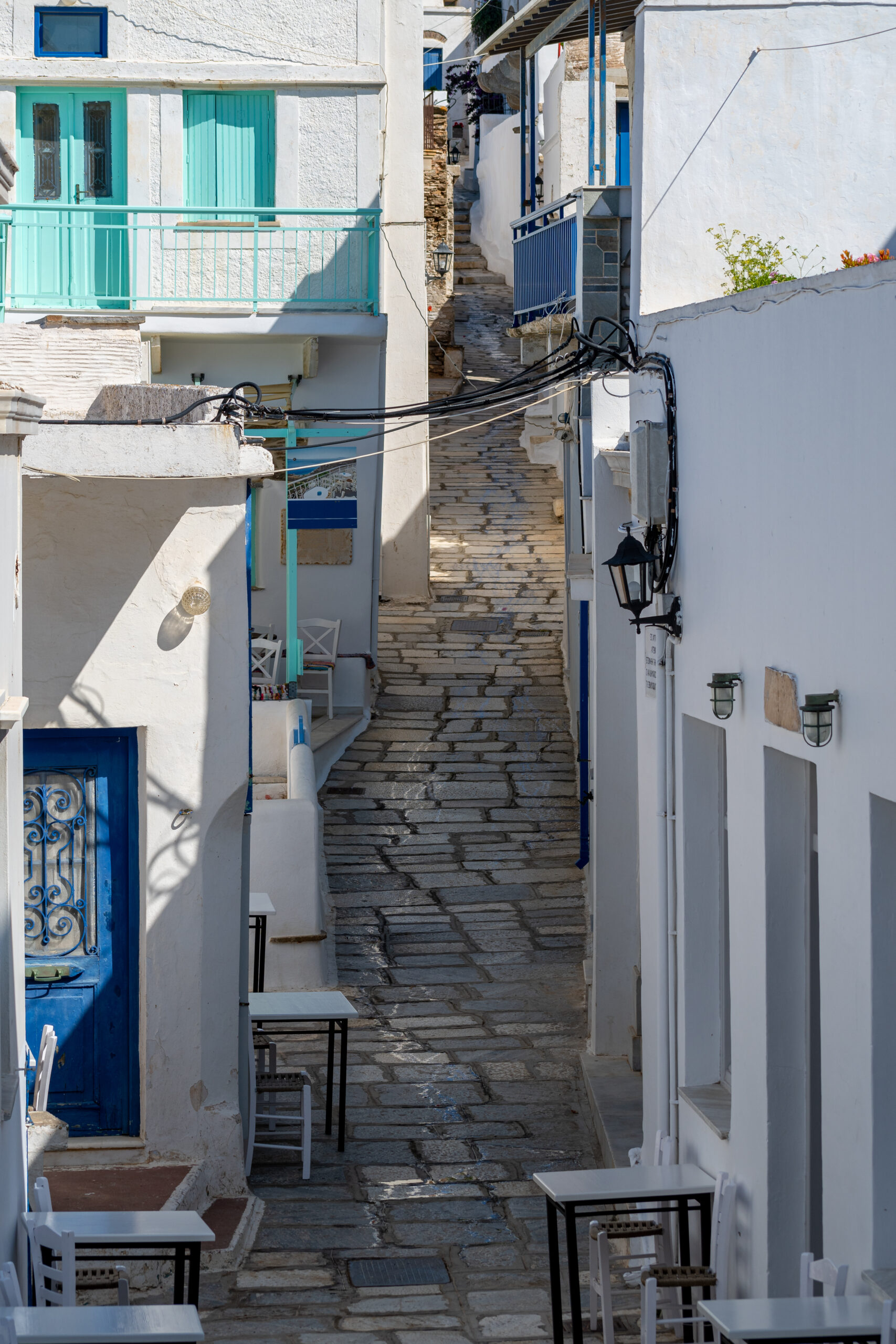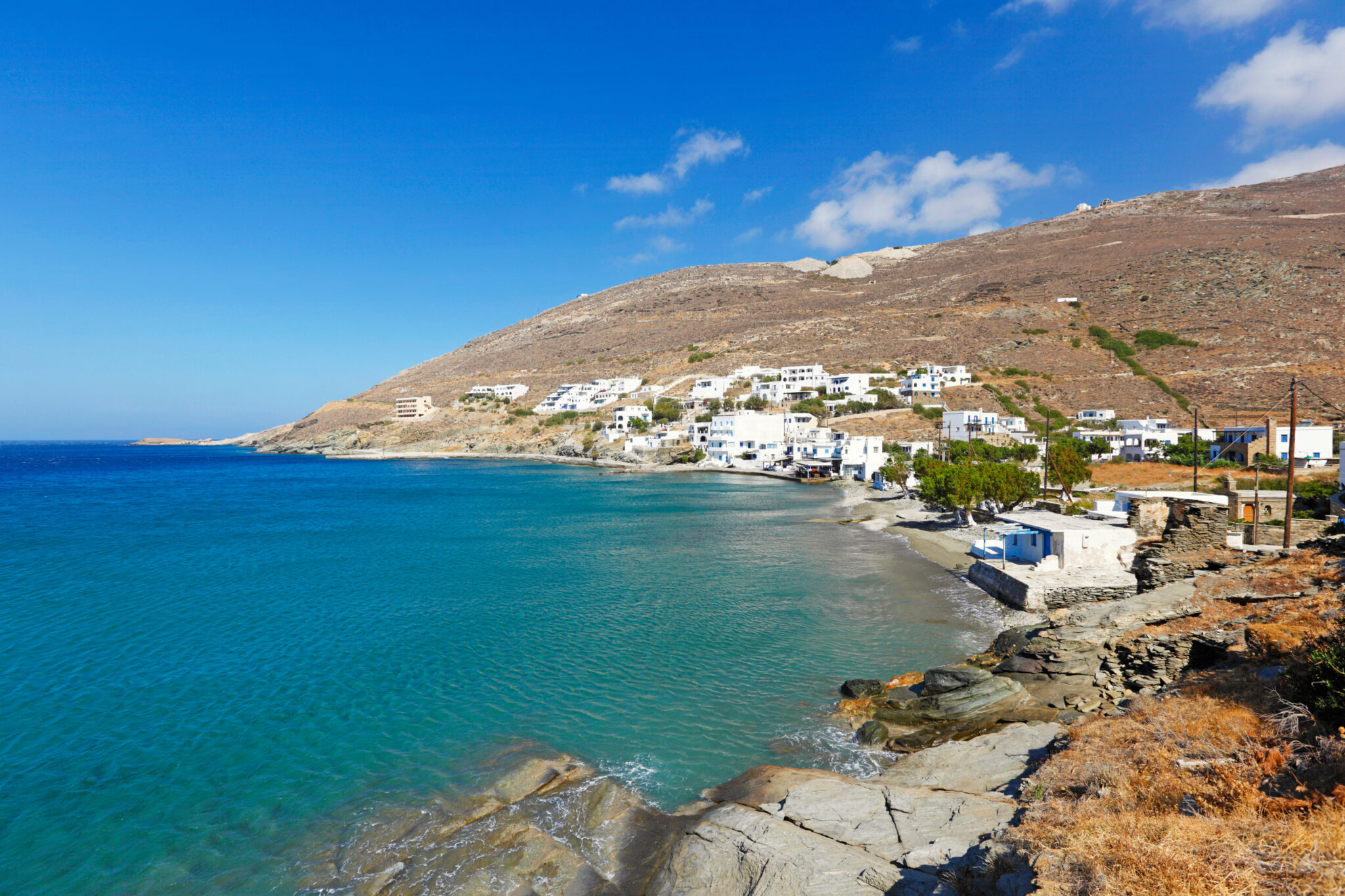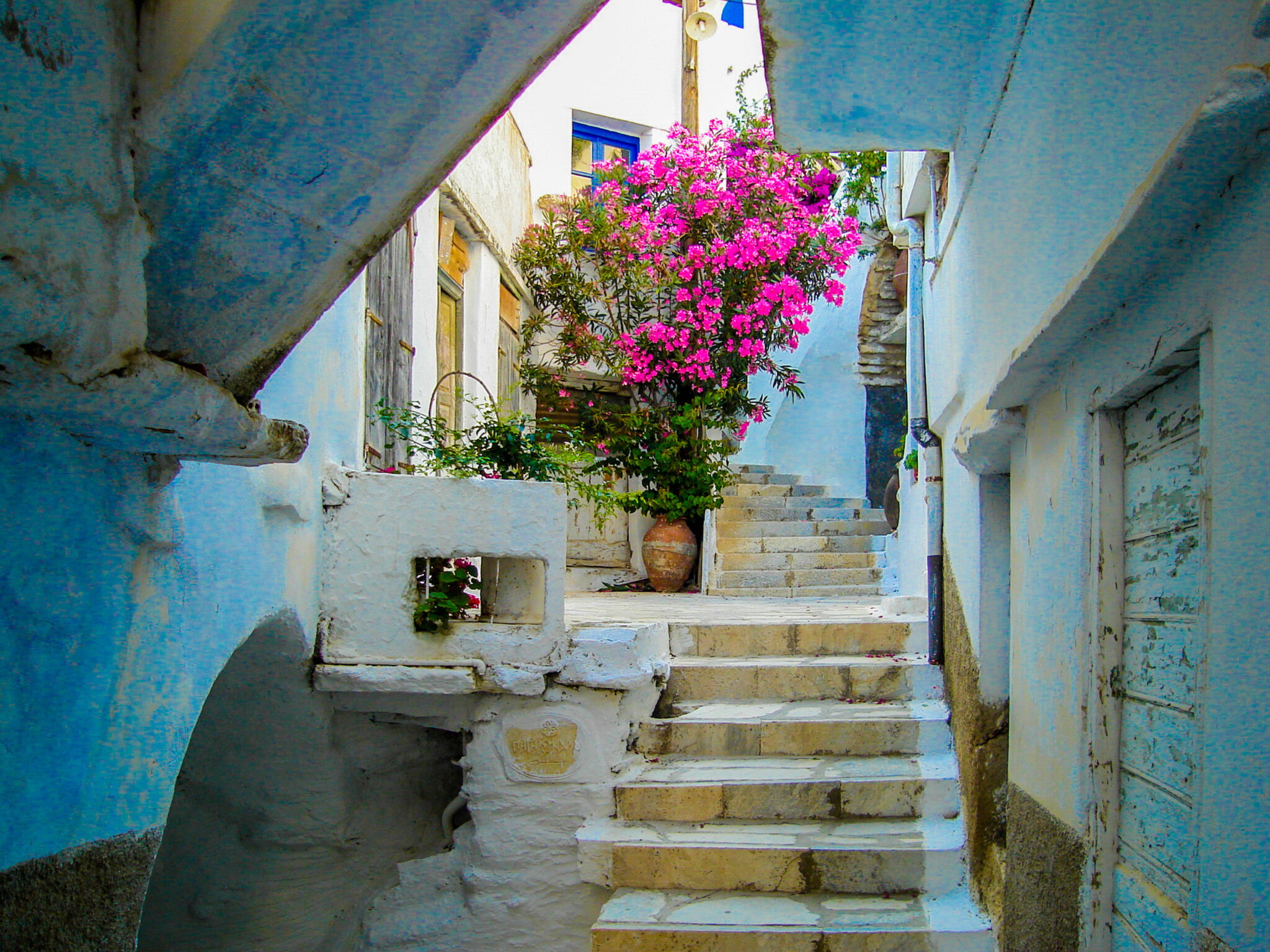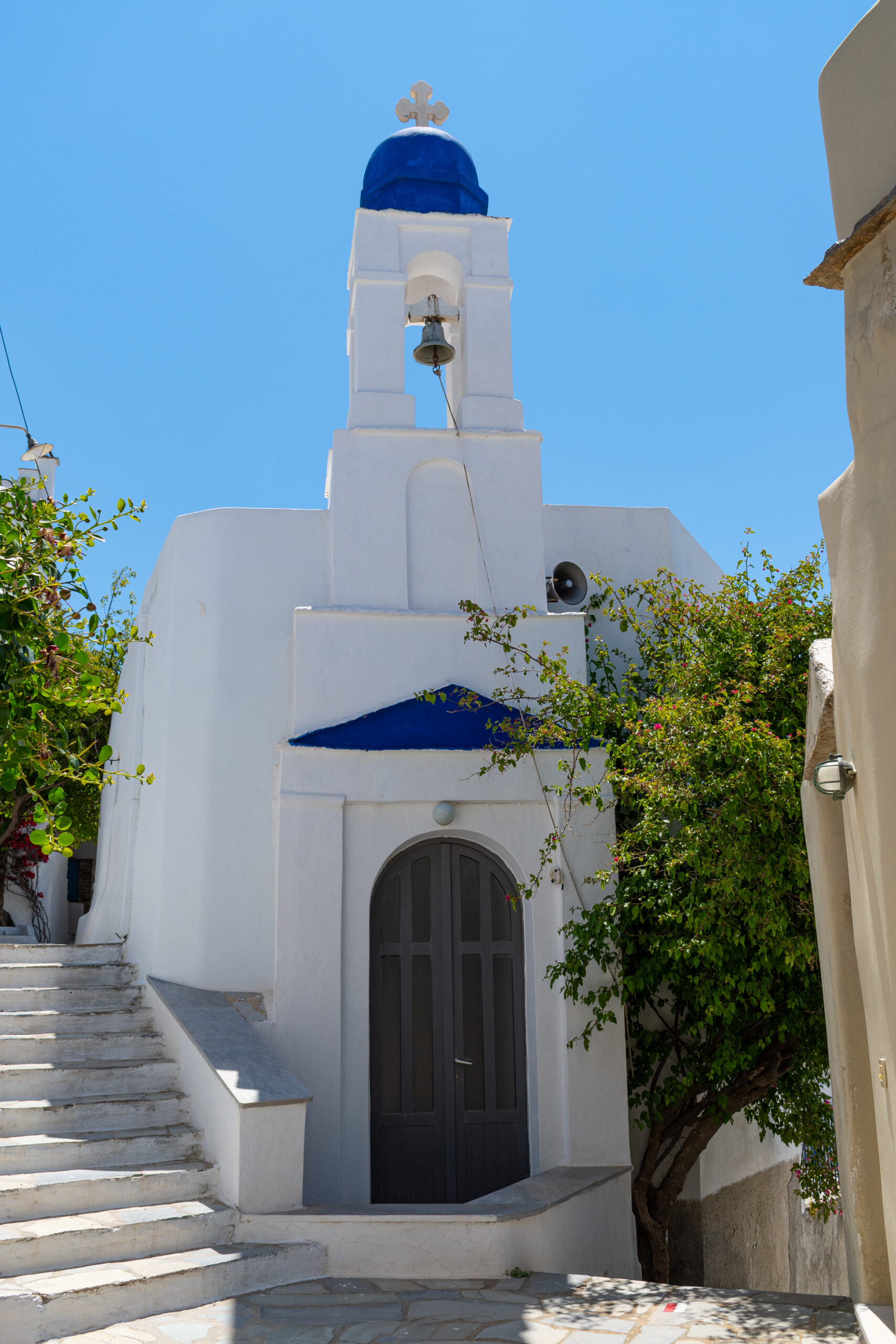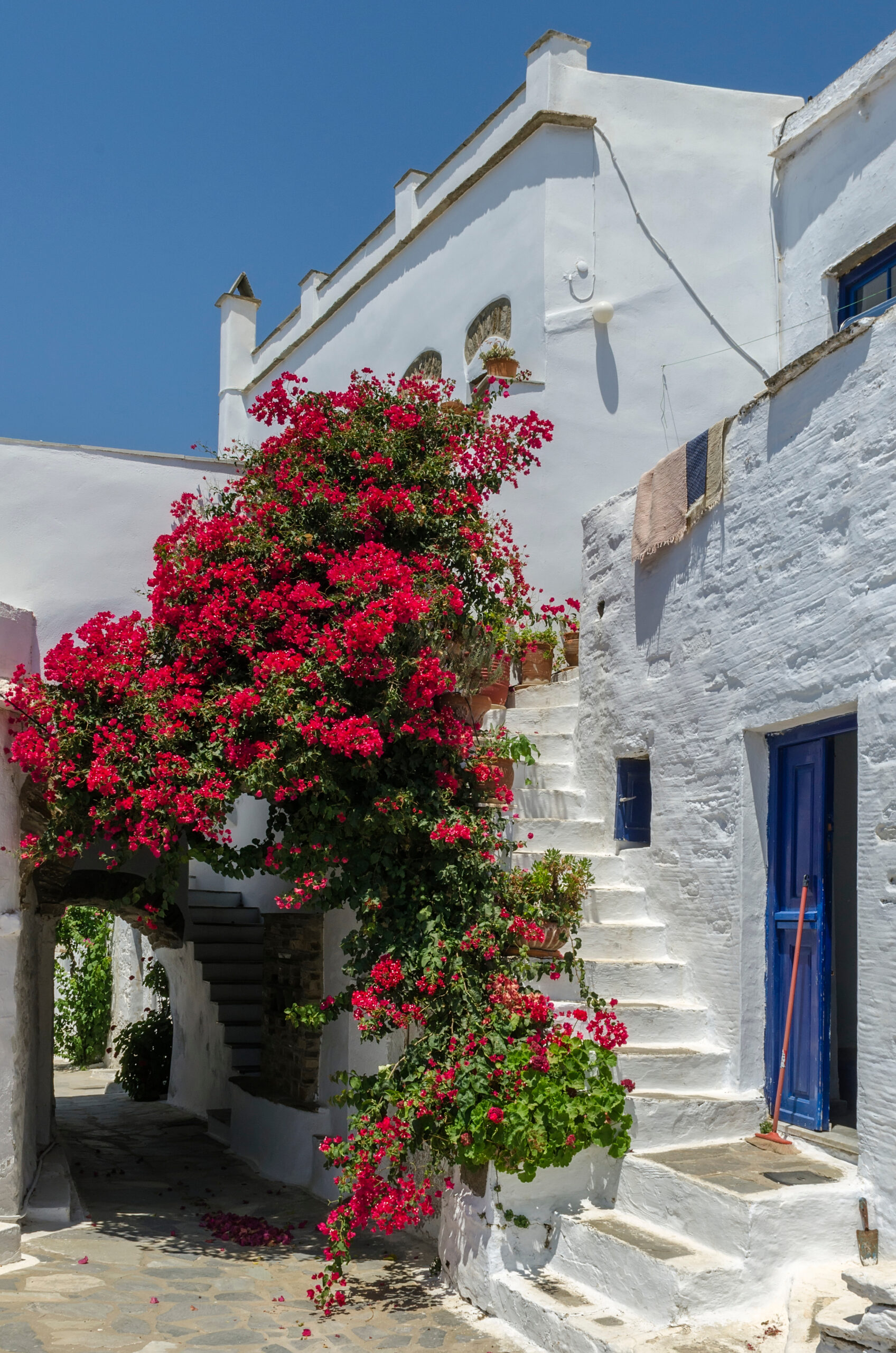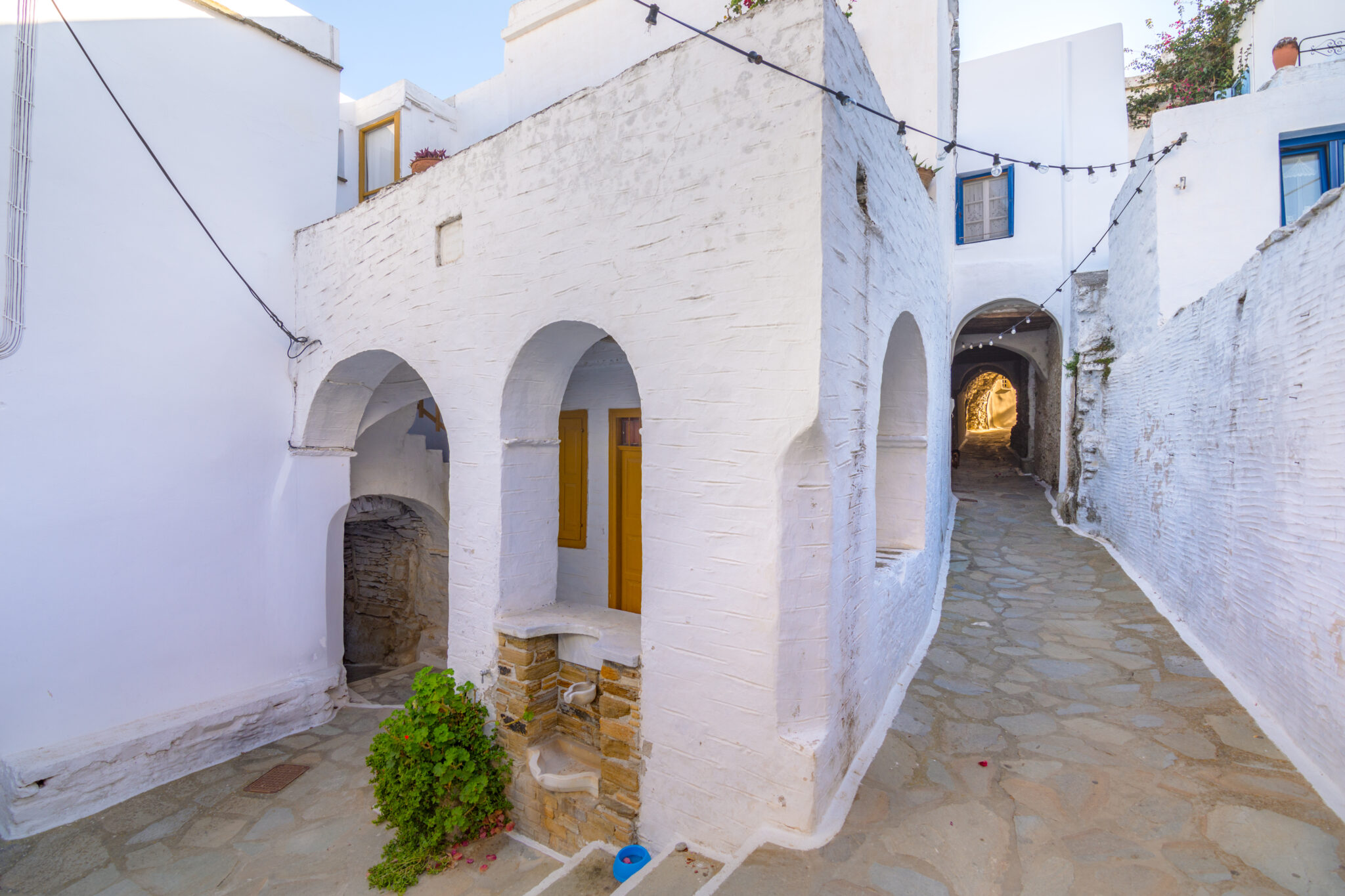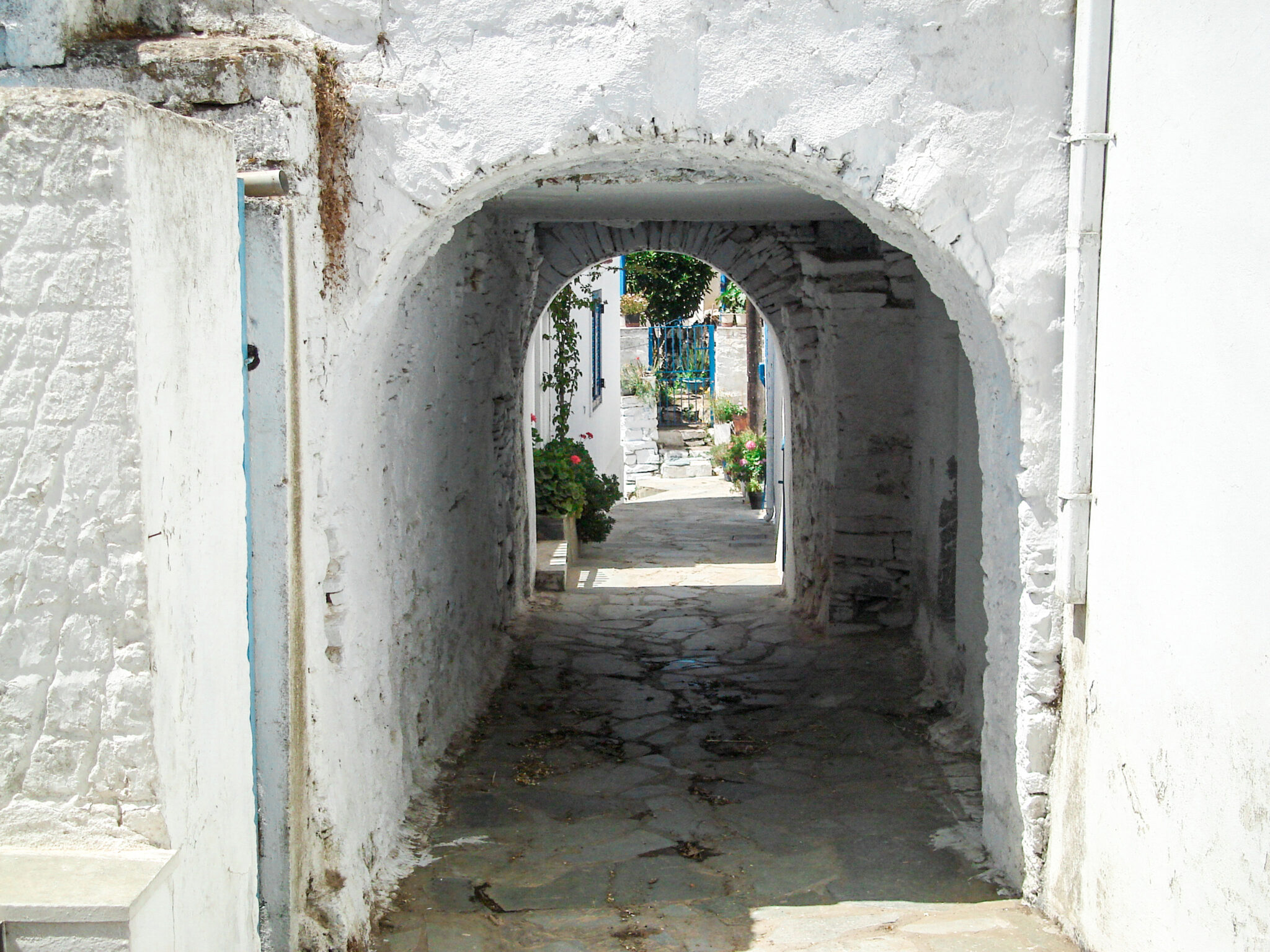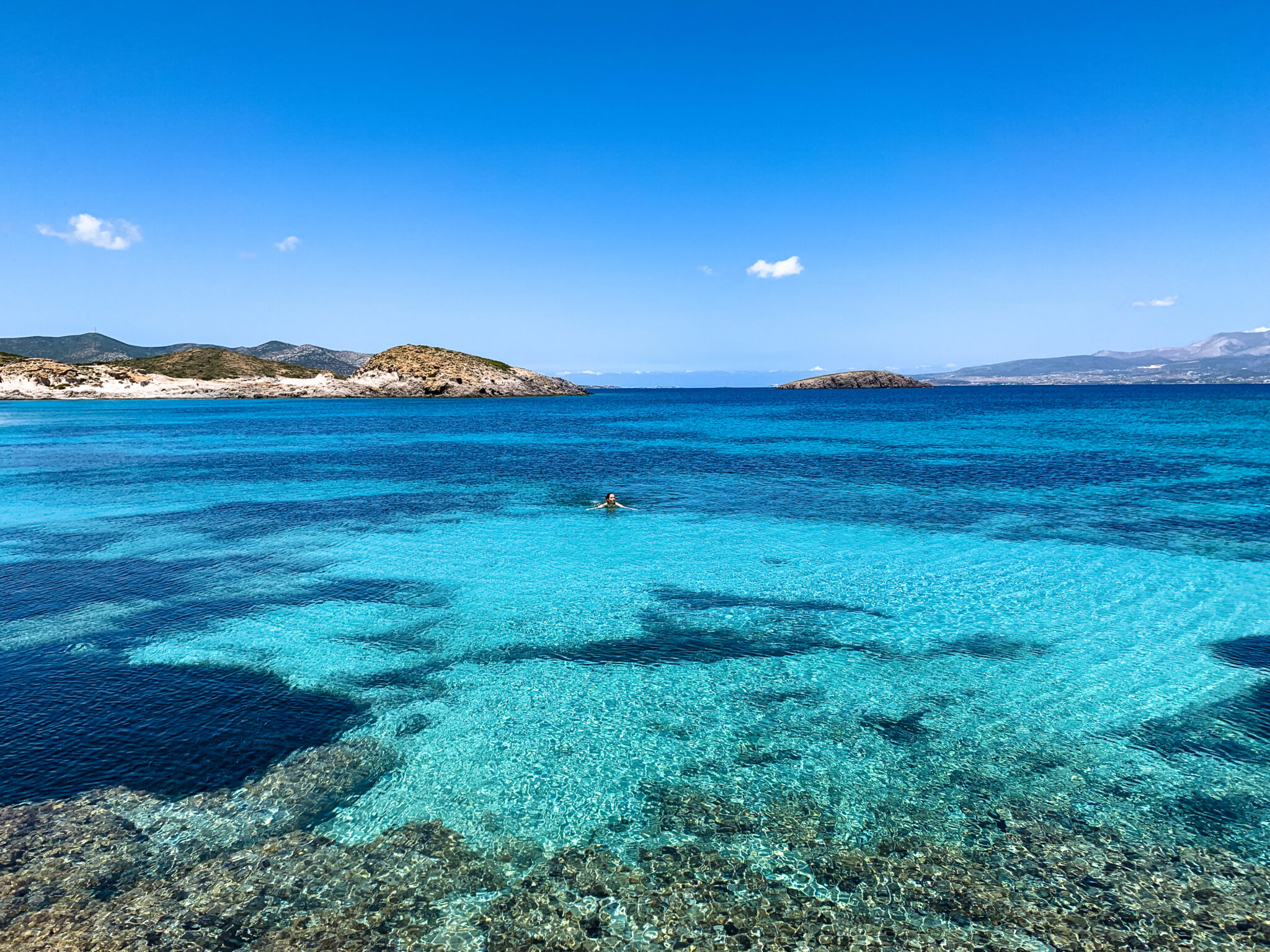Tinos has successfully reimagined its reputation, transcending its previous identity that was anchored chiefly in religious tourism and the Church of the Annunciation. This evolution owes much to the charming traditional villages and captivating attractions that adorn this land.
Volax and Kakovolo
It’s near impossible to remain indifferent to the other-wordly landscape of Volax, scattered with thousands of small and large spherical granite rocks in a triangular plateau spanning 23 square kilometres. Some speculate these are the remnants of an ancient seabed that emerged thousands of years ago, or even meteorite debris. However, geologists argue that it is the result of “the spheroidal weathering of granite and granitic geomorphs of the tafoni and alveoles type.” Amid these granites, the small village of Volax gleams in white. Nearby Falatados is the starting point for a journey through Kakovolo, as the locals affectionately name it. A multitude of rounded granites creates one of the most dramatic landscapes in the Cyclades, like a breath-taking outdoor geological museum. Among these stones are old threshing floors, tiny churches and storage “cells” for livestock, and vineyards.
Kechrovouniou Monastery
The ancient Kechrovouniou Monastery, home to Our Lady of the Angels and distinguished by its noteworthy architecture, remains a significant pilgrimage site on the island. Despite the dearth of written records about the monastery, it is widely accepted that its founding dates back to the Venetian era, and that the Catholic section underwent renovations in 1774. Following a trail, you’ll find the humble cell of nun Saint Pelagia, who dreamt of the Virgin Mary’s icon location on July 23, 1822, according to local lore.
Exobourgo
The peculiarly shaped rocky hill is discernible from many vantage points on the island. Perched 640 metres above sea level, these rugged, naturally fortified rocks once housed the highest castle in the Aegean Sea. This area served as the island’s capital during various historical periods. The climb up to the rock with the castle ruins and crows circling above is a memorable experience, with unparalleled views of the neighbouring islands. Exobourgo’s inhabitants moved inland during the Byzantine period due to piracy threats, and in 1207, when the Gizi brothers occupied Tinos, they constructed the Ag. Eleni castle there. The Ottomans captured the castle in 1715 and subsequently destroyed it. By the early 20th century, the area had been abandoned and the capital shifted to Tinos town. At the foot of the rock, the Orthodox chapels of Ag. Minas and Ag. Eleousa remain, along with the large Catholic pilgrimage of the Sacred Heart of Jesus. Established by Jesuit monks and renovated in 1893, the site has been a hotspot for rock climbing enthusiasts in recent years, with 90 different routes of varying levels of difficulty.
The Dovecotes of Tinos
The dovecotes of Tinos, first documented in 1726, still stand in various states of preservation. Approximately 600 of these ornately constructed structures, built from slate, stone, and limestone, are scattered across the island. Their intricate ‘lithokentimata’ or stone cut-outs, form a diverse array of triangles, rhombuses, and suns. It is thought that these structures were introduced to the island by the Venetians. The residents of Tinos continued to breed pigeons for their droppings, used as fertiliser, and for the delicacy of squab meat. These isolated dovecotes are strewn across the island, and a cluster of them can be found in Tarampados, a charming village founded in the 17th century. Dovecotes can also be seen in Potamia, Steni, Falatados, and the valley of Tripotamos.
The Churches
Countless Orthodox and Catholic churches dot the landscape of Tinos, their elegant marble bell towers standing proud amid the settlements. Whether large or small, public or private – estimated to number around 600 – these structures punctuate any voyage across the stark Cycladic landscape. Their minimalist designs and striking white facades provide a vibrant contrast against the backdrop of drystone walls, slopes, fields, ridgelines, or the neighbouring sea. Almost every church celebrates with both modest and grand festivals, inviting all passers-by to partake in food, drink, and dance.
Vrekastro
On the eastern boundary of the lively Agios Fokas beach, a rocky hill juts out into the sea, known as Vrekastro (or Vryokastro). Atop this hill, you can find remnants of a fort and a Neolithic settlement dating back to the 16th century BC.
The Sanctuary of Poseidon and Amphitrite at Kionia
Ancient Tinos was a pilgrim’s destination, as evidenced by the Τemple of Poseidon and Amphitrite at Kionia. Initially a modest sanctuary facing the sandy beach, it gradually grew in prominence and a healing and purgation sanctuary was established within the sacred grove. From the 7th century BC to the 4th century AD, Poseidon was revered here as a healer. The sanctuary underwent a significant upgrade in the 3rd century BC, acquiring greater magnificence, and Amphitrite was introduced for worship. The ancient temple met its demise at the hands of Christians in the early 4th century. The archaeological site is now open to visitors.
Pyrgos and Panormos
A visit to Tinos would be incomplete without a sojourn to Pyrgos, with its renowned square and its marble fountain, cafes and eateries, all under the towering shade of a giant plane tree. As the largest settlement after Tinos town, Pyrgos draws crowds. When visited under quieter circumstances it feels like the quintessential Cycladic village and an open-air folk art museum. A leisurely stroll through its lanes rewards visitors with sights of blooming courtyards and a wealth of marble architectural elements – doorways, windows, ornamental reliefs, and fountains. Don’t miss the Museum of Marble Crafts, the Museum of Tinian Artists, and the preserved home of Yannoulis Halepas. Just 3.5 kilometres from Pyrgos, you’ll discover Panormos, a charming harbour filled with fishing boats, accommodations, beachside tavernas, cafes, and restaurants. Across the waters, the islet of Planitis with its 1886 lighthouse illuminates the unique northern harbour of Tinos.
Kardiani and Ysternia
Built amphitheatrically into the slope of Mount Pateles, Kardiani is enveloped in verdant greenery and offers a stunning view of the sea. A walk through the village reveals attractive houses, marble fountains, vaulted arcades, and both Catholic and Orthodox churches – including the famous Panagia of Kioura, the Dormition of the Virgin Mary, and the Holy Trinity. Lingering in Kardiani until evening rewards you with a magnificent sunset, best enjoyed from the central square by the iconic frog-sculpted fountain. The village also features luxurious rental villas, complete with pools and incredible sea views.
The timeless village of Ysternia, renowned for its marble sculptors, offers a display of masterful architecture with marble taking centre stage. Built in an amphitheatrical style, the grand Byzantine-style church of Agia Paraskevi stands out. Its marble courtyard faces a splendid view of the sea and the bay of Ysternia. The bay is also a worthy destination, particularly for food lovers, for it’s home to the highly lauded Thalassaki restaurant. South of the tavernas, a small sandy beach offers a secluded spot for bathing, shielded from the northerly winds.
Triandaros and Berdemiaros
Poised on high ground, yet inconspicuous from the sea due to past precaution against pirate invasions, these two adjacent settlements likely originated in the 13th to 14th centuries. The houses of Berdemiaros resemble scenes from old postcards, the majority restored to their former glory. Triandaros, renowned for its skilled stonemasons, has seen a recent surge in fame owing to expert builders adding a new ‘suburb’ of Cycladic-style houses for purchase and luxury hotels, resplendent with suites and pools.
This bustling, expansive village has breathtaking vistas, inviting tavernas, and the much-loved Cycladic alleyway, Triandaraki. Meander along this route to discover chic boutiques, and take respite in the cafes and restaurants. Don’t overlook the fountain from1905, the 1887 Church of the Holy Apostles, and the ancient olive oil mill in Triandaros.
Loutra
This village likely derived its name from the ancient baths located at its outskirts. Amid the quintessential Cycladic houses, the Ursuline Monastery and the subsequent Ursuline School are significant landmarks. Established in 1862 and flourishing in the early 20th century, it catered to 300-350 boarders. The impressive Church of Saint Joseph from 1860 adds to the appeal of this quaint village. As part of the Catholic Monastery of the Jesuits, it accommodates monks from an older monastery established in 1670 in the Xombourgo region. The monastery boasts a library holding thousands of titles and a modest folk museum.
Tripotamos and Ktikados
Situated among three river valleys, the houses of Tripotamos emerge from the verdant landscape. This medieval settlement, likely of Byzantine origin, houses the remarkable Church of the Assumption of the Virgin Mary (1853), guardian of the icon of Christ’s Nativity. Ktikados, with its stunning architecture and panoramic sea views towards Kionia, is amongst Tinos’ most beautiful villages. The cobblestone lanes with archways, houses with marble latticed windows, the fountains where women still launder carpets and blankets, the Catholic Church of the Holy Cross and the Orthodox Church of Ypapante or Megalomatas are sights to behold. A well-trodden path leading to Chora begins in Ktikados.
Xynara and Falatados
Enthroned at the base of Xombourgo since the 19th century, Xynara is the seat of the Catholic Archdiocese and hosts a museum of ecclesiastical artefacts. Two notable Catholic churches, Our Lady of Rodario (1860-1870) and Apostles Peter and Paul (1836), assert their presence amongst the charming houses.
To genuinely appreciate Falatados, the second-largest village in Tinos after Pyrgos, a walking exploration is essential. Navigating through the cobblestone lanes, you’ll find yourself in the square of Panagia Megalochare and the Church of St. John-Holy Trinity. This basilica-style structure, built in the late 19th century, features a towering 18-metre dome. Within the village, you can also see the two historic churches of Agia Paraskevi and Dormition of Theotokos. Ouzeri-cafés, taverns, and the popular Suntan cocktail bar keep villagers and visitors happy.
Lesser-Known Villages
Incorporating all the settlements of Tinos into a single succinct travel guide is not an easy task. A plethora of larger and smaller villages on the island are also very well worth visiting, such as Dyo Choria with its shady square – a breakfast hotspot; Arnados, Agapi, Komi, Potamia, Myrsini, Steni, Kampos, Karya, Mountados, and several more. Each village boasts unique attractions and secrets. In recent years, even the smaller villages have seen the sprouting of cafes and taverns. For the adventurous, a walk in the Kori Pyrgos region, in Polemou Kampos, and in the ruins of the Monasteries offer unforgettable experiences. It’s undoubtedly worth venturing to the coastal settlements of Marlas and Mamados, situated near Pyrgos.
Read also:
Tinos Island: A Journey into its Artistic Heritage



